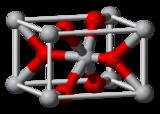General Information about Tin Dioxide
Tin dioxide is an inorganic compound consists of Tin metal and Oxygen with the formula SnO2. The mineral form of SnO2 is called cassiterite, and this is the main ore of tin. Tin Dioxide is an important chemical compound in Tin chemistry. It is a colourless, diamagnetic, amphoteric solid.
Applications of Tin Dioxide Nanoparticles/Nanopowder

Tin Dioxide nanoparticles/nanopowder have applications in electronic devices. These nanoparticles/nanopowder are used in liquid crystal displays, optoelectronic devices and solar cells. For anti-static and energy conserving coatings Tin Dioxide nanoparticles/nanopowder are useful materials. In some chemical reactions Tin Dioxide nanoparticles/nanopowder are used as catalysts. Magnetic properties of Tin Dioxide nanoparticles/nanopowder are used in magnetic data storage and magnetic resonance imaging. Tin Dioxide nanoparticles/nanopowder are widely used in sensing applications due to its semi conductor properties like in smoke sensors, humidity sensors, gas sensors etc. Tin Dioxide nanoparticles/nanopowder are also used in transparent heating elements.
Technical Properties of Our Tin Dioxide (SnO2) Nanoparticles/Nanopowder, 430 nm, Purity 99.97% Product

| Purity % | 99.97 |
| Morphology | spherical |
| AVERAGE PARTICLE SIZE (nm): | 430.0 |
| SPECIFIC SURFACE AREA (m2/g): | 15 |
| Melting Point (°C) | 1650 |
| Boiling Point (°C) | 2250 |
| Bulk Density (g/cm3) | 0.5 |
| True Density (g/cm3) | 7,1 |
You may give an order of Tin Dioxide (SnO2) Nanoparticles/Nanopowder, 430 nm, Purity 99.97% from the link given below:
Technical Properties of Our Tin Dioxide (SnO2) Nanoparticles/Nanopowder, 18 nm, High Purity 99.9999% Product
| Purity % | 999.999 |
| Morphology | spherical |
| AVERAGE PARTICLE SIZE (nm): | 18.0 |
| SPECIFIC SURFACE AREA (m2/g): | 45-85 |
| Bulk Density (g/cm3) | <0.5 |
| True Density (g/cm3) | 7,1 |
You may give an order of Tin Dioxide(SnO2) Nanoparticles/Nanopowder, 18 nm, High Purity 99.9999% from the link given below:
Technical Properties of Our Tin Dioxide (SnO2) Nanoparticles/Nanopowder, 30-60 nm, High Purity 99.87% Product
| Purity % | 99.87 |
| Morphology | spherical |
| AVERAGE PARTICLE SIZE (nm): | 30-60 |
| SPECIFIC SURFACE AREA (m2/g): | 20 |
| Bulk Density (g/cm3) | <0.5 |
| True Density (g/cm3) | 7,2 |
You may give an order of Tin Dioxide (SnO2) Nanoparticles/Nanopowder, 30-60 nm, High Purity 99.87% from the link given below:
Comments
Post a Comment